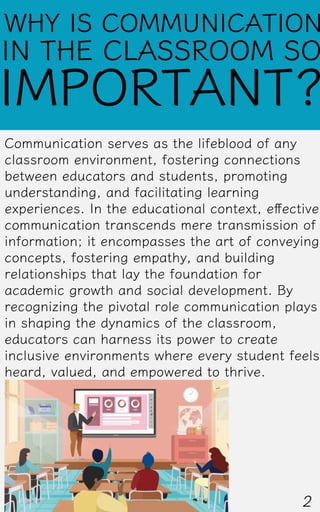The document is a comprehensive guide on effective communication strategies tailored for the classroom to enhance academic improvement. It focuses on the importance of foundational communication skills, building positive teacher-student relationships, leveraging technology, and fostering inclusivity among diverse students. The document emphasizes practical tools and techniques for educators to create supportive environments, manage classroom dynamics, and engage with parents effectively for overall student success.















